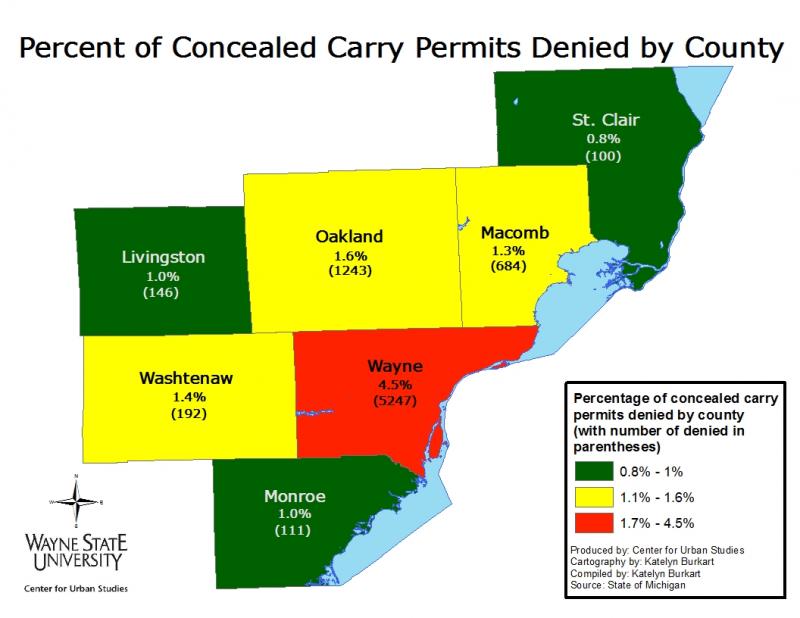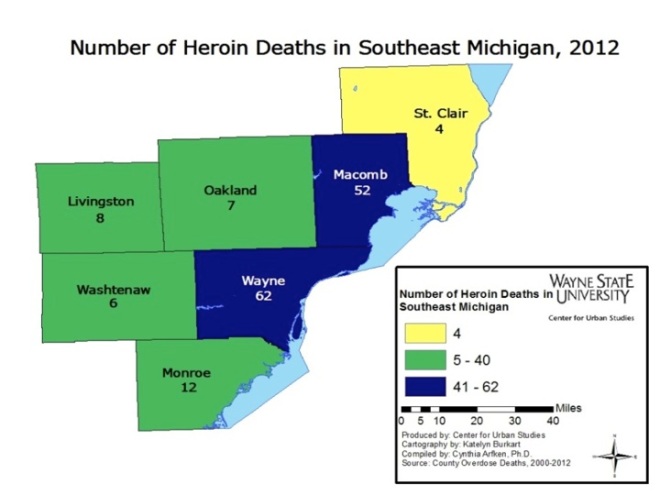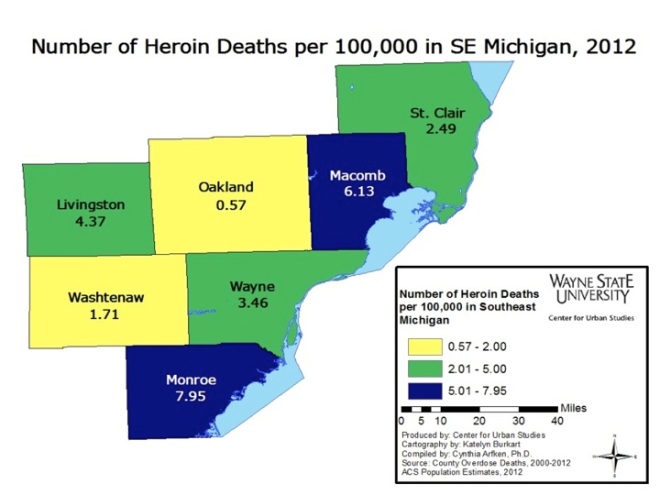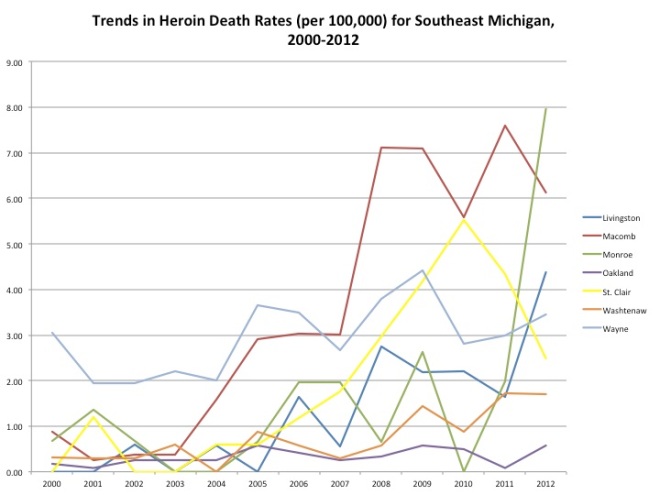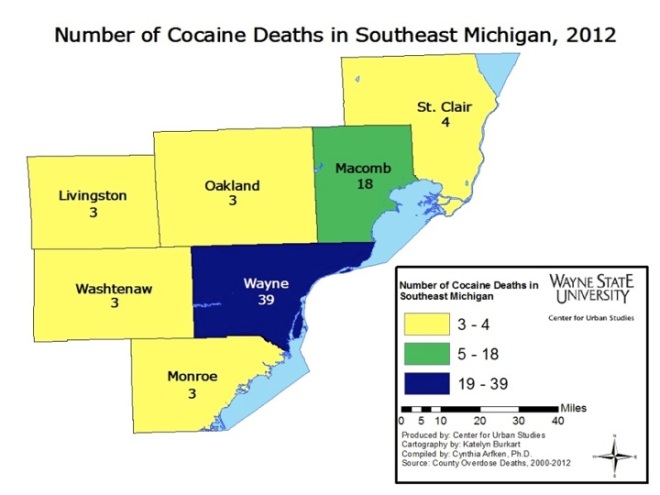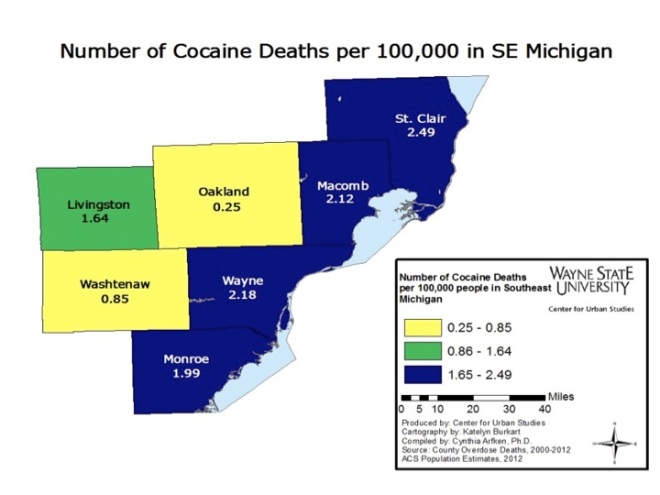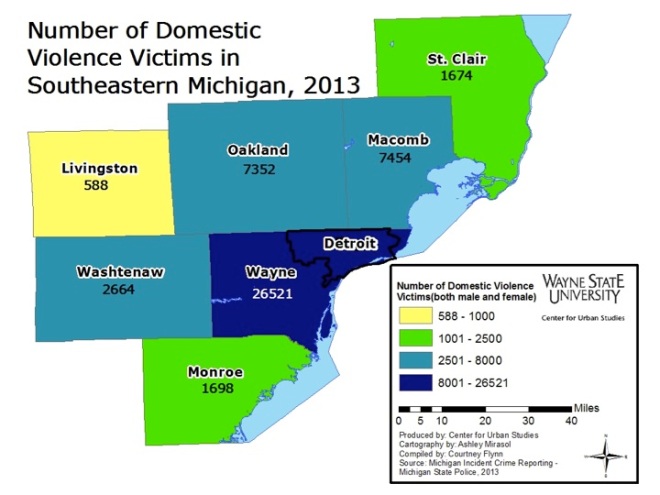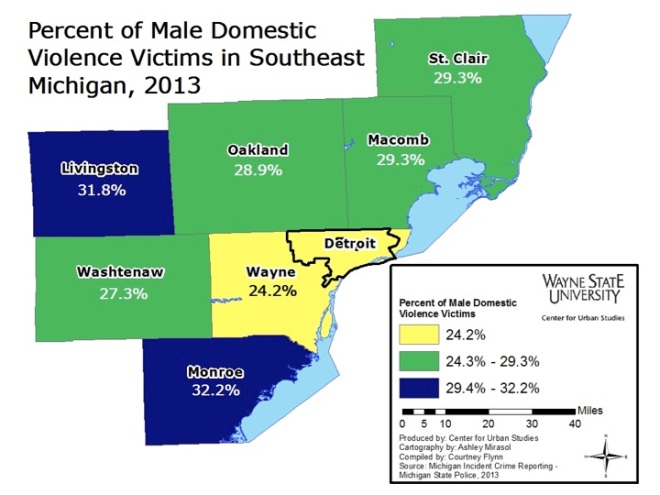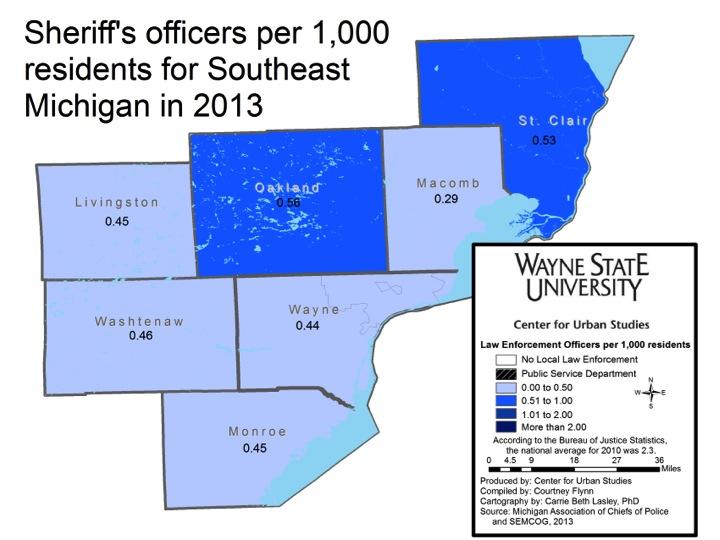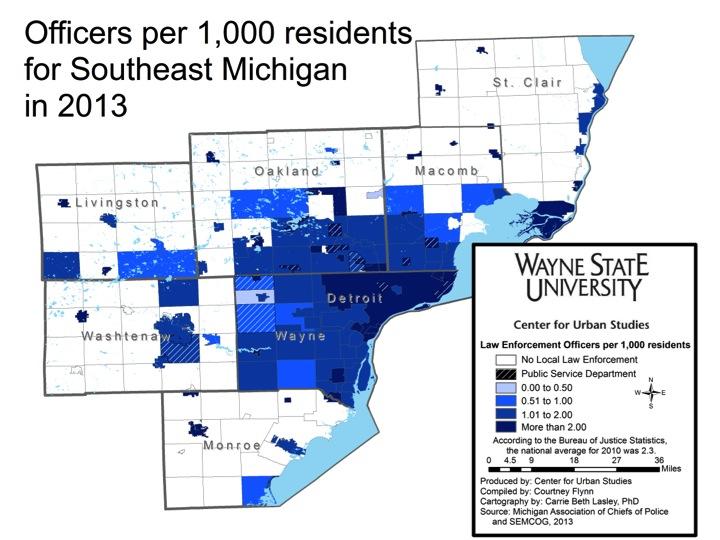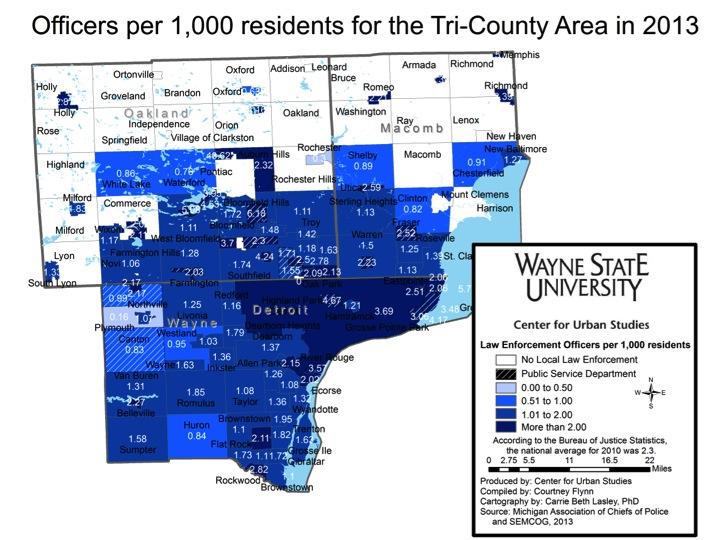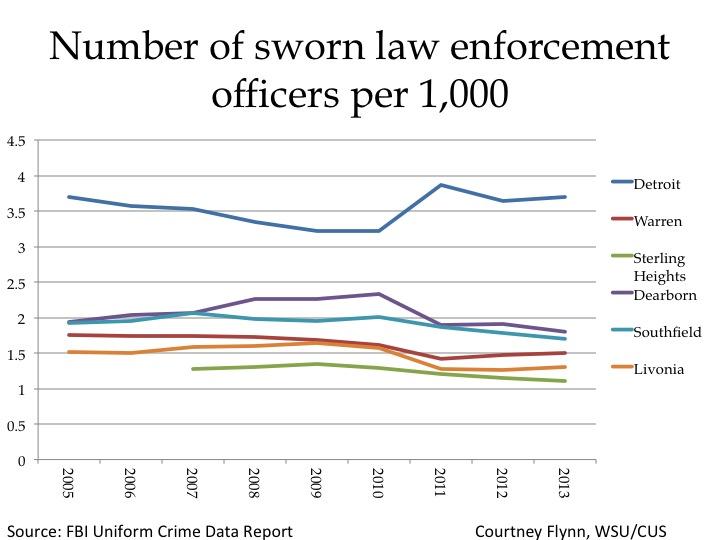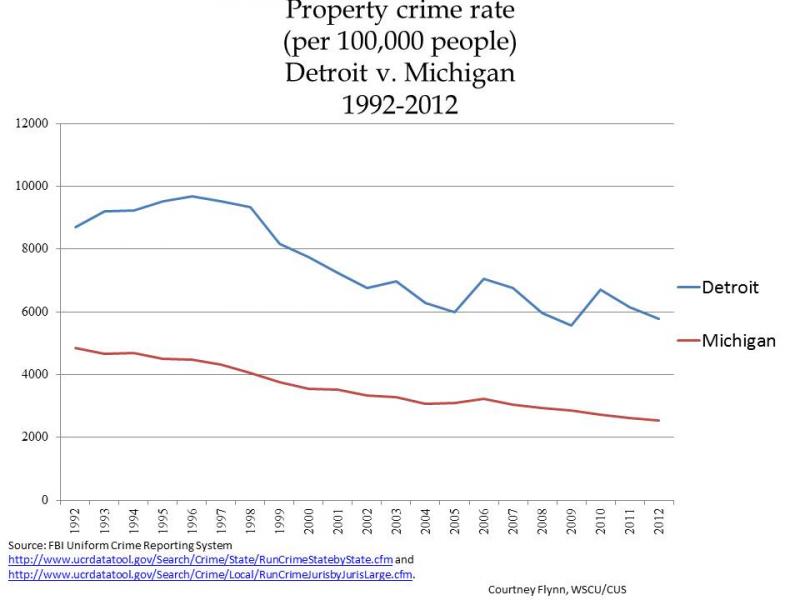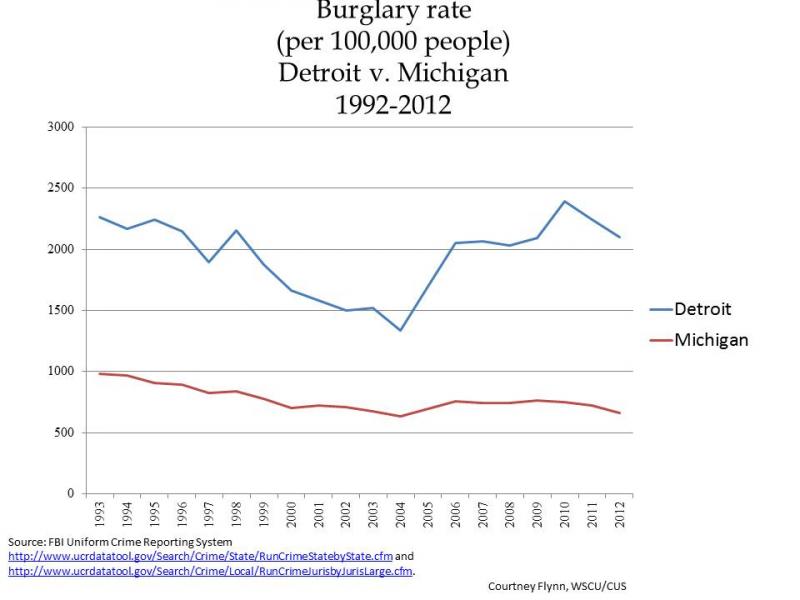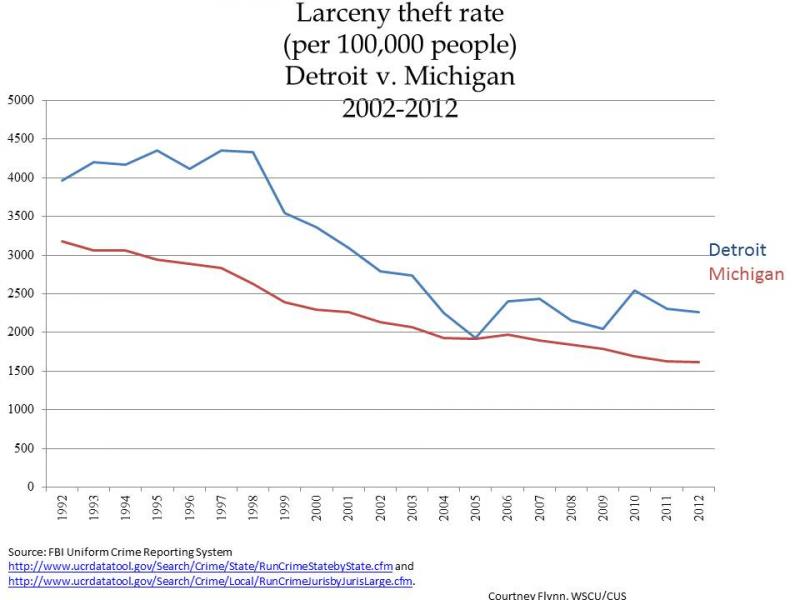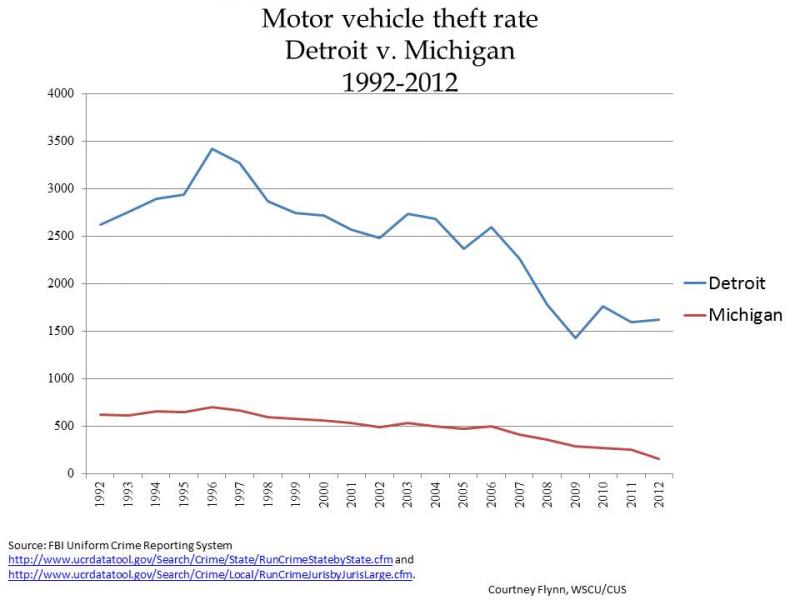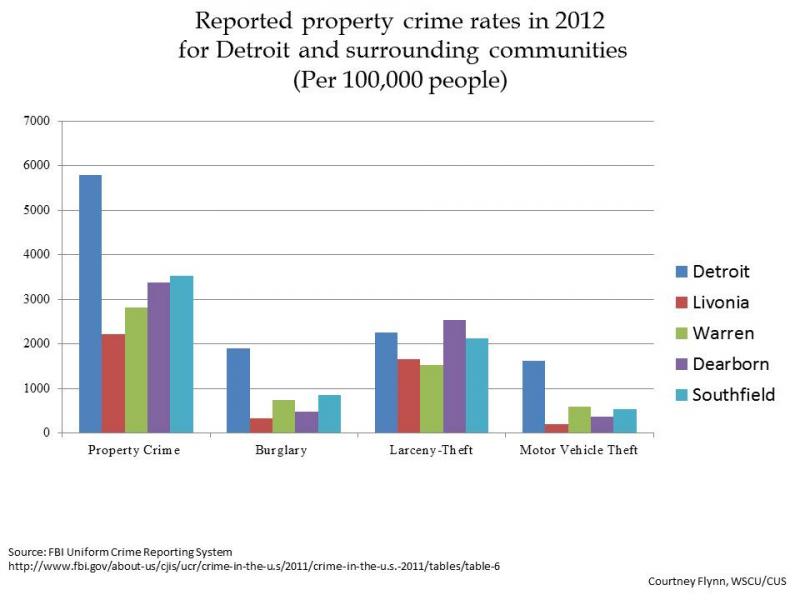Detroit may no longer be grimly perched a top the Federal Bureau of Investigation’s murder-rate list (St. Louis took that spot for 2014), but regionally it still stands out. The city of Detroit has consistently had the highest number of murder/non-negligent manslaughter offenses throughout the region, even prior to 2009. While the six-year span from 2009-2014 the city’s murder offenses number peaked at 348 in 2009, the counties in the region did not experience the same trend. Rather, in the same time frame, the number of murder/non-negligent manslaughter offenses in Oakland County peaked in 2011 at 33, the only year in that time frame in which there were more offenses there than in Wayne County. In 2011 Wayne County’s number dropped to 26 from 35 the previous year; that same year Detroit’s number increased to 291 from 319.
From 2012 to 2013 all the counties in the region, with the exception of Oakland and Monroe counties, experienced an increase in the number of murder/non-negligent manslaughter offenses. Wayne County experienced the largest increase at 9; Oakland County’s number dropped by 10 that year. From 2013 to 2014 Wayne County again experienced a dropped, from 49 to 17. While these numbers do not include Detroit’s murder data, it does follow the same trend of Detroit’s murder numbers dropping to an all time low in 2014. In 2014, according to the Michigan State Police Data, it was Oakland County with the highest number of murders (excluding the city of Detroit) at 18. Although Oakland County had the highest county number in 2014 it has been experiencing a decrease since 2011, when it reached a peak of 33.
While Detroit may have the highest number of murder offenses in the region, it has experienced a decrease in that, and violent crime overall. In 2014, according to information provided by Police Chief James Craig, Detroit had the fewest number of criminal homicide offenses in the last 47 years. The chart shows just how drastic the number of murder offenses is between Detroit and other regional cities though. With Detroit’s murder offense number at 300 in 2014 the city police agency that reported the second highest murder offenses in the region was Inkster with a number of 6. Warren, which is the second largest city both in the region and the state, had four murder offenses and Sterling Heights, the fourth largest city in the state, had zero.
Throughout the state though Flint had the second highest number of reported murder offenses at 28 and Saginaw came in third with 11.
According to 2013 data from the Michigan State Police, which is mapped below, there were 306 murders/non-negligent manslaughter occurrences in the city of Detroit in 2013 and 96 everywhere else throughout the region. St. Clair County had the least, with just three in the county in 2013, two of which occurred in Port Huron. Wayne County had the highest number of murders/non-negligent manslaughter offenses in 2013, with 306 occurring in Detroit and 49 occurring elsewhere throughout the county. Even when removing Detroit data from Wayne County’s numbers, Wayne County would have still sat atop the list regionally. Of the 49 murders/non-negligent murder offenses that occurred in Wayne County, outside of Detroit, 15 occurred in Inkster, according to the Michigan State Police.





